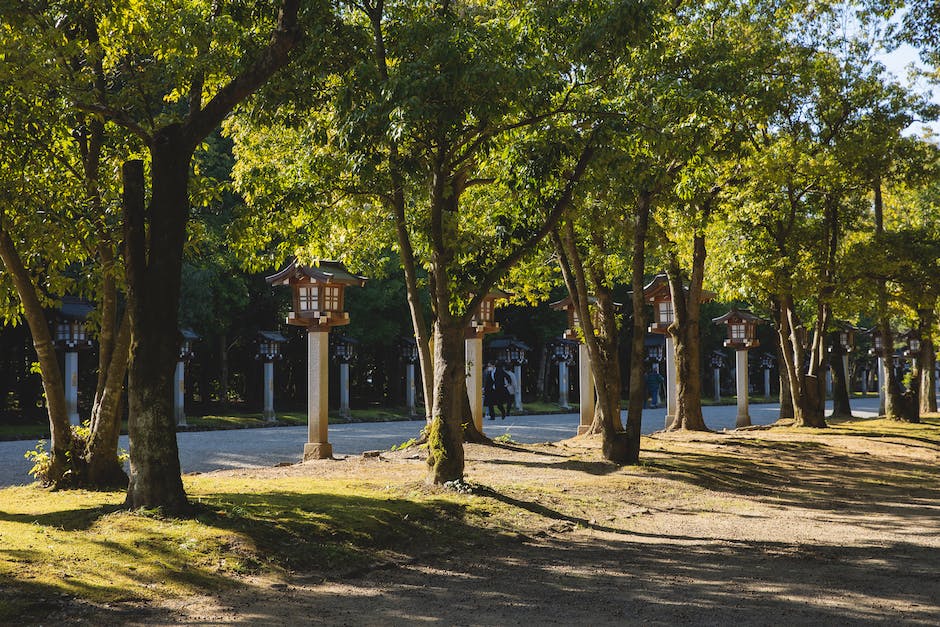Yes, Japanese maple trees can grow in full sun, however they prefer partial sun or filtered sun. Full sun may scorch the leaves and cause the tree to become stressed. If you live in an area with very hot summers, it is best to provide some afternoon shade for your Japanese maple tree.
Rate of growth for a Japanese maple is largely dependent on the amount of sunlight it receives. In general, those that are grown in full sun will grow faster than those that are grown in shaded areas. However, too much sun can cause the leaves to burn, so it is important to provide some protection from the afternoon sun, especially in hot summer climates.
Which Japanese maple is most sun tolerant?
Acer japonicum ‘Aconitifolium’ is a green leaf maple with deeply divided leaves that turn brilliant shades of red and orange in the fall. It is one of the most sun-tolerant Japanese maples, able to handle full morning sun in southern states like Texas, Oklahoma, and Alabama.
Yes, hot summer sun exposure can result in sun burned leaves on many varieties of red Japanese Maples. I can attest to this from personal experience. With the recent summer winds and hot sun, all of my Japanese Maples have sun burned leaves and some early leaf drop.
Can Japanese maple grow in hot climate
Japanese maples are fairly heat tolerant. References often list them as hardy up to Zone 7 or 8, but many gardeners successfully grow them in higher Zones. However, in hot, dry climates, the leaves will often scorch, therefore protection from the afternoon sun is important.
If you have Japanese maple trees in your yard, you’ll want to take steps to protect them from the hot summer sun. One way to do this is to use shading cloth to create a makeshift canopy over the trees. This will help to keep them cool and prevent leaves from scorching. Be sure to secure the cloth well so that it doesn’t blow away in strong winds.
How much sun can a Japanese maple handle?
Bloodgood Japanese maple trees prefer to grow in partial shade, or about four hours of direct, unfiltered sunlight per day. They can also grow in full sun, which is six hours or greater. However, shadier planting sites will lead to more robust and vivid foliage colors.
Watering:
Water every 2-3 days for the first month after planting. After that, a good watering once a week should be sufficient, but monitor it often as windy days can dry out soil quickly. If the tree is fall planted, water once a week when no rain or snow cover is provided.
Mulching:
Always provide a layer of mulch around Japanese maple trees. This will help to keep the roots moist and protect them from extreme temperatures.
What kills Japanese maple trees?
Japanese maples are susceptible to a soil-borne fungal disease called phytophthora when they are exposed to wet conditions. This disease can kill trees branch by branch. To avoid this, it is important to plant Japanese maples in well-drained soil and to provide them with adequate protection from the rain.
Japanese maples are a beautiful addition to any garden, and they can thrive in a variety of climates. However, they can be sensitive to heat, so it’s important to take care to protect them from the sun. One way to do this is to feed them with Dyna-Gro Protect, which can help to improve their heat tolerance. Also, placing a layer of mulch under your tree can help to insulate the soil and keep the roots cool. Just be sure to keep the mulch 3” to 4” away from the trunk to prevent crown rot.
How hot is too hot for maple trees
Although maples can withstand full sun, it is best to provide morning sun and afternoon shade if the temperature exceeds 85 degrees. This will help the tree to grow successfully.
Japanese maples are a beautiful addition to any garden, and most varieties will do well in zones 5 – 8. However, they can be sensitive to the heat and may suffer from leaf scorch if not given adequate summer irrigation and protection from the hot afternoon sun.
Are Japanese maple trees easy to grow?
Pansies are one of the most popular flowers grown in gardens. They are easy to grow and care for, and they come in a variety of colors that will add interest to your garden. Below, you’ll find tips guides on how to grow and care for these lovely ornamentals and also share some of our favorite varieties, pest and disease management, and more!
One of the most common signs of stress in plants is burning on the tips of leaves. This can be caused by a number of factors, including too much sun or wind. Maples are particularly susceptible to this type of stress, especially during the first year or two after transplanting. If you notice any signs of stress in your plants, be sure to take steps to mitigate the problem.
How do I make my Japanese maple happy
When you are choosing a maple tree, you want to make sure that you select a species that is appropriate for the area in which you live. Some maples are more cold hardy than others, so be sure to do your research. Also, be sure to plant your maple tree in an area that receives full sunlight. Maple trees need plenty of sunlight in order to produce the sugar that makes their syrup.
If your Japanese Maple’s leaves are turning brown or black at the tips, this could be a sign of over watering. Over watering is a common cause of decline in these trees, so it’s important to be aware of the signs. If you think your tree may be over watered, try reducing the amount of water you give it and see if the issue improves.
What kind of fertilizer do Japanese maples like?
There are a few different types of fertilizer that can be used on Japanese maples, but I recommend using a slow or controlled release type fertilizer. Commercially known as Polyon or Osmocote, these are the most common and both work very well on Japanese maples. We use both successfully in our Japanese maple production.
Japanese maple trees are a beautiful addition to any garden and can be planted in the spring or fall. They require a little extra attention in the first few years while they’re getting established, but after that they are easy-to-grow, low-maintenance, and hardy. These trees are perfect for creating a peaceful and relaxing environment in your backyard.
What is the life expectancy of a Japanese maple tree
Japanese maples typically grow just one to two feet per year, which is why it might be wise to buy the largest one you can afford. That said, under the right conditions, they can live to be over one hundred years old.
Japanese maples should be fertilized only after they’re a year old, or during the second growing season. The best time to fertilize is late winter or early spring. Japanese maples are naturally slow-growing trees, so stimulating rapid growth with a high-nitrogen fertilizer should be avoided.
How do you keep Japanese maples red
One factor to consider when you place your red Japanese maple is that they do need a little sunlight to maintain their brightest-red color. Too much shade minimizes the red shades. The leaves will not be as striking in the shade as they would be if the tree was planted in another area with more sunlight.
Japanese maples are perfect for those who want to add a little bit of color to their gardens without having to deal with a lot of upkeep. They are beautiful trees that can range in color from red to orange to yellow, and they are perfect for a smaller space since they don’t grow too tall or wide.
Do Japanese maple trees need lots of water
Mulberry trees are quite drought tolerant, but like most young trees, they need regular, deep waterings during the first few years. Plan to water heavily twice a week during normal weather and three or four times a week during periods of drought.
Japanese maples are susceptible to several different diseases that can cause leaf spots and early defoliation. The most common foliar diseases are anthracnose, Phyllosticta leaf spot, and Pseudomonas tip blight. There are also several insects that can attack Japanese maples, including Japanese beetles.
What is the best time of year to plant a Japanese maple
If you live in a region with a hot summer climate, it’s best to plant your Japanese maple in fall or spring. The cooler temperatures and shorter days of fall allow the tree to transition more easily to its new environment. Plus, the tree will have a chance to establish its roots before the heat and dryness of summer arrive.
Flowers bloom between May and June and are insect pollinated. The fruit is a winged seed called a samara; they are green to red and ½ to ¾ inch long. Samaras ripen between September and October and are scattered by wind. The bark is green to gray and smooth.
Should I remove scorched leaves from Japanese maple
If your tree has a burnt look, you can correct it by removing the foliage. To do this, gently pull or snip the damaged leaves off each branch. If you pull the leaves, they will snap at the stem and leave a little bit of themselves on the tree. If you push each leaf backward toward the stem and beyond, it will peel off cleanly at the leaf node.
Beni Kawa is a beautiful Japanese maple that is known for its deep green foliage that transforms into gold and crimson in fall. It is also known for its scarlet bark that looks fabulous in winter snow. It grows to 15 feet (5 m), making it one of the most cold hardy Japanese maples.
Should you water trees in extreme heat
If you’re concerned about your trees during an excessive heat event, we recommend doubling your normal watering routine. This means your new trees should receive 15 gallons of water at least twice a week throughout the heat wave, for a deep watering every three to four days. This will help keep your trees healthy and hydrated during the hotter temperatures.
Tamuke-yama is the fastest growing of the cascading forms. It is also the most heat resistant and so the ideal choice for hotter, humid areas. The leaves are reliably purple-red all summer, turning crimson in fall.
Conclusion
Japanese Maple trees can grow in full sun, but they prefer partial sun. They need at least four hours of direct sunlight each day, but too much direct sunlight can be damaging to the leaves. If you live in an area with hot summers, it’s best to protect your Japanese Maple tree from the afternoon sun by planting it in a shady spot or by covering it with a light colored cloth.
Although Japanese maple trees can grow in full sun, they prefer partial sun or partial shade. If you live in an area with very hot summers, it’s best to plant your Japanese maple tree in a spot that gets afternoon shade.
Jackson Hill is a passionate arborist with years of experience in the field of trees. He developed his fascination with trees at a young age, spending countless hours exploring the forests and climbing trees. Jackson went on to study arboriculture and horticulture at Michigan State University and later earned a degree in forestry from the University of Michigan.
With his extensive knowledge and expertise, Jackson has become a trusted authority on trees and their impact on the environment. His work has helped shape the field of arboriculture and he continues to be a leading voice in the industry.
